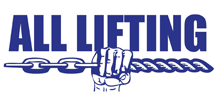
WHAT ARE THE DIFFERENT TYPES OF ANCHOR POINTS?
Anchor points are essential elements of height safety, they are part of the components that provide security to workers while performing jobs at heights. When you require a fall prevention system you will need to install an anchor point. This must be securely installed and checked by a competent person. Anchor points are used to protect employees from accidents and falls. Most commonly for work positioning, fall arrest, restraint, horizontal lifeline and rescue. You can also read our height and safety guide article to see all of the risks of working at heights.
There are different types of anchor points for different purposes. It is important that you know what the surface is that you are working on, as they can be temporary or permanently installed. You will also need information on the different types available.
Surface Mount Anchor Point:
This type of device can be used on most metal roofs and is easy to install. They are versatile and are attached directly to the rooftop with stainless screws. Commonly used on metal clad roof areas for fall arrest or restraint.
Concrete Mount Anchor Point:
This type of device is designed to be fixed into concrete surfaces which can be done in two ways; a chemical fix or a torque anchor. This anchor point is commonly used on high-rise buildings with a concrete roof, for abseiling use or fall arrest/restraint.
Surface Mount Abseil Anchor Point:
These are used when abseiling is required over the side of a building and the roof membrane is metal cladding rather than concrete.
Temporary Anchor Point:
A temporary anchor point allows the users to install these devices in most type of surfaces permitting the workers to complete the job in a safe manner without the need of installing permanent anchor points. These devices are not suitable for abseiling. They are commonly used for one-off jobs. If the job requires regular maintenance then permanent anchor points or a guardrail and walkway would be a more suitable option.
Remember that a certified person needs to identify the anchor point to assure the fitting is suitable for the purpose and complies with all of the requirements for use in Australia. At All Lifting we have trained staff to help you with the correct fittings for the required work. If you need more information or if you are looking for anchor point testing or an installation service, do not hesitate to contact us. Please email or call us on 1300 666 73 and one of our specialised staff will be happy to help you.



